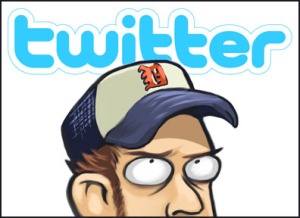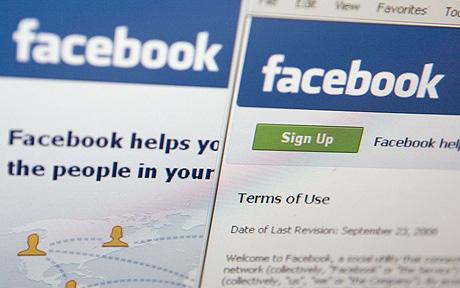
Since the rise of the internet in the 1990s, pornography has managed to rule the internet in terms of providing users with constant flow of content. While there has always been difficulty in accurately measuring how big internet pornography is , the online pornography industry is estimated to be worth about $97 billion, and counts for about 13% of website visits in America. According to Top ten reviews, an internet site monitor, a new pornographic video is being created in the United States every 35 minutes. But with the rise of social networks and social media it appears that new internet platforms are overtaking pornography in terms of online popularity.
According to The Economist, an online newspaper, pornography-related web activity is decreasing in America. This has been attributed to more and more people opting to participate in social networking sites such as MySpace, Bebo and Facebook.
These advancements then lead to one asking if the rise of social media over internet pornography means that the internet has matured as a medium. After all, pornographic content is often the first to take advantage of new media, from photography to videocassettes to satellite television. “Sex is a virus that infects new technology first,” as Wired put it back in 1993. Once a new medium becomes popular, its usage is usually dominated by porn.”
But one should not make the mistake of ruling out porn because porn will always be popular on the internet. Just because people do not go to porn sites to see or download porn it does not mean that they are not engaging in pornographic material over the social networks. Internet users are realizing that one can get actual sex via social networking instead of settling for porn.

Most discussions on the social networks are based on sex talk and flirting and according to a study on teens that use social networks 54% of the users spoke about sex related issues online. It’s a fact that social media does not guarantee sex any more than porn does. But it provides the anticipation of sex, the possibility of sex, the idea that you just might get lucky. It’s the premise of porn, manifested in reality.
Social networks also facilitate the sending of users own naked pictures and videos which can still constitute as pornographic material. Social networking sites such as Hi5 which have social groups which allow members of that group to post pictures of themselves naked or interesting so called sexy positions. These groups are however classified and one can only enter through an invite.
The fact that the user is in direct communication with the producer or actor of the pornographic material adds more interest to the experience. So a decrease in the number of visits to internet pornography sites can be witnessed, but this decrease is not necessarily due to a lack of interest but because of the thrill presented by the other platforms in obtaining porn material.
Porn is staying alive

But one should not rule out the efforts being made to keep porn alive by the major players in the internet porn industry. Seeing that social media and networks have the ability of turning consumers into producers of porn material, the porn makers have acknowledged the abundance of free porn on the internet and have began to make moves towards trying to make a profit from it. One good initiative is StumblePorn, which is a free porn browser which allows the users to customise their porn content. This effort tries to make it easier to search for porn on the internet and hence aims to attract people to download porn because it has been made easier.
Pligg’s content management system has made it easy to establish socially driven sites that essentially replicate all the functionality of Digg. These content management systems have facilitated aggregator sites such as MoSexIndex and socialporn which enable users to get to porn sites easily.
Since one of the major highlight of the social media and networks is the ability for consumers to produce content, the porn industry has also facilitated for online porn users to produce and share their pornographic material. Following in the footsteps of YouTube and how it popularized the online video sharing phenomenon, porn producers have created several sites that let you upload, watch, and share pornography videos. Most prominent of these are YouPorn and PornoTube.
Ultimately the point of this post is not to simply direct you towards tools that let you access free pornography, but is to document how the social media space is maturing. The porn industry is just another example of one more industry acknowledging the potential of social media as a medium for disseminating content and utilizing these various models.



 So you decide that you are lonely and bored and have nothing better to do with your bandwidth. Nothing interesting is happening on the news or on your Facebook or Myspace profile pages so you decide to go hunt for new friends online. You discover that an old schoolmate of yours who you never spoke to much at school is on Facebook.
So you decide that you are lonely and bored and have nothing better to do with your bandwidth. Nothing interesting is happening on the news or on your Facebook or Myspace profile pages so you decide to go hunt for new friends online. You discover that an old schoolmate of yours who you never spoke to much at school is on Facebook.












 Imagine phoning Telkom customer service and they put you on hold for 30 minutes, you eventually get impatient and you drop the phone and log onto to Twitter. You send a Twit about how long you have been placed on hold and how inefficient you think Telkom customer service is. Within a space of an hour, over 50 people respond to your Twit and also express the same sentiments about Telkom.
Imagine phoning Telkom customer service and they put you on hold for 30 minutes, you eventually get impatient and you drop the phone and log onto to Twitter. You send a Twit about how long you have been placed on hold and how inefficient you think Telkom customer service is. Within a space of an hour, over 50 people respond to your Twit and also express the same sentiments about Telkom. All this has been changed by the World Wide Web’s ability to enable customers to research products and services, and then through the explosion of social media tools such as Facebook and Twitter which can enable them to voice their opinions about products. Most businesses appreciate customer feedback, and social media has proved that it has the potential to transmit information at a fast rate thus making the feedback loop so much efficient because the company will get information in time to react upon it.
All this has been changed by the World Wide Web’s ability to enable customers to research products and services, and then through the explosion of social media tools such as Facebook and Twitter which can enable them to voice their opinions about products. Most businesses appreciate customer feedback, and social media has proved that it has the potential to transmit information at a fast rate thus making the feedback loop so much efficient because the company will get information in time to react upon it.



 Online social networking is one of the most efficient modes of communicating with distant friends, but this form of communication also comes with its own challenges. One of the biggest challenges that come with online social networking is the introduction of third parties to one’s conversation or exhibitions. Yes, social networking sites provide an opportunity for distant friends to link up and catch up on each other’s lives. But the big question is, who else is listening in on these stories, who else knows what colour you like or what type of car you have just bought.
Online social networking is one of the most efficient modes of communicating with distant friends, but this form of communication also comes with its own challenges. One of the biggest challenges that come with online social networking is the introduction of third parties to one’s conversation or exhibitions. Yes, social networking sites provide an opportunity for distant friends to link up and catch up on each other’s lives. But the big question is, who else is listening in on these stories, who else knows what colour you like or what type of car you have just bought. 
Recent Comments